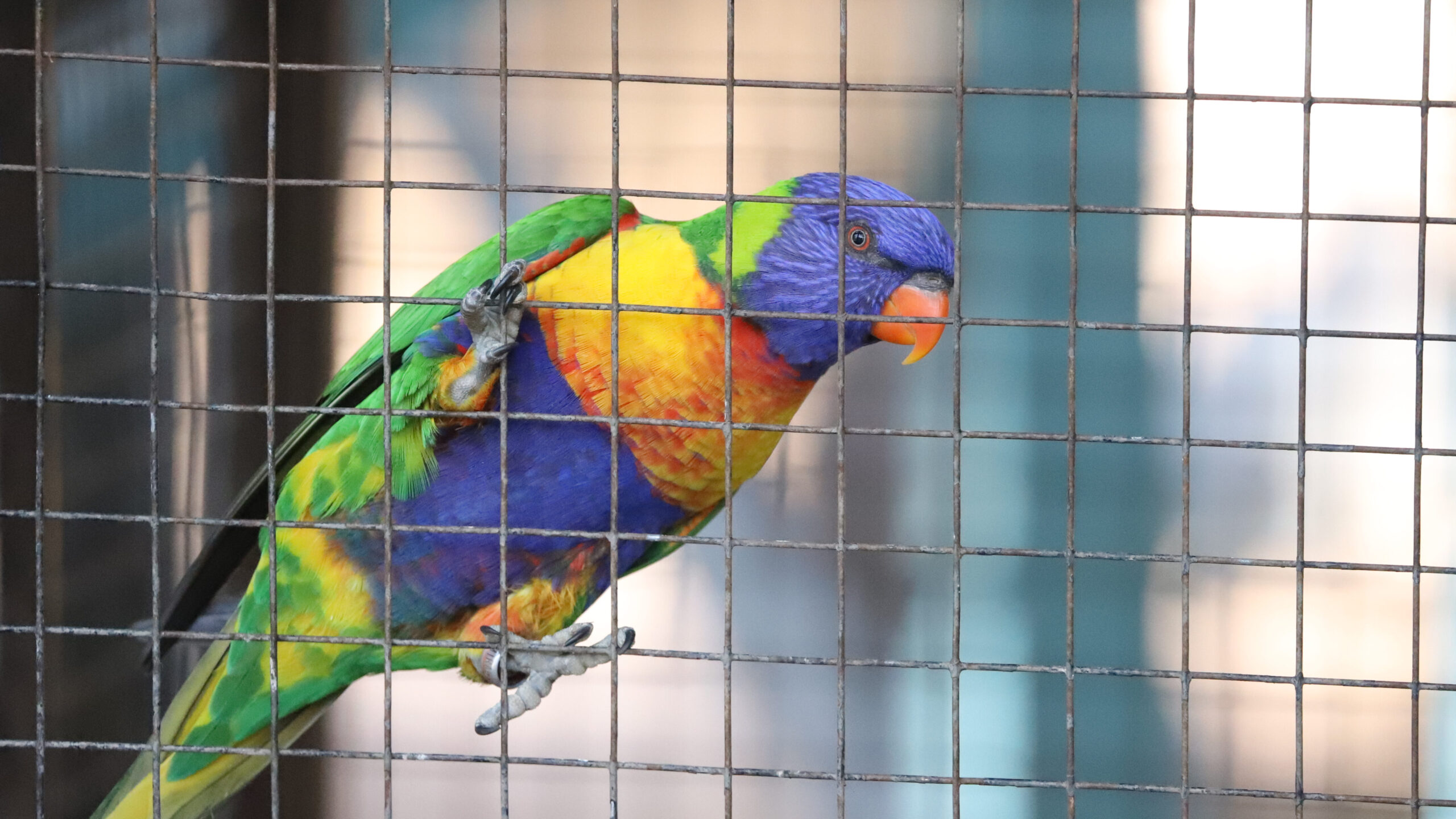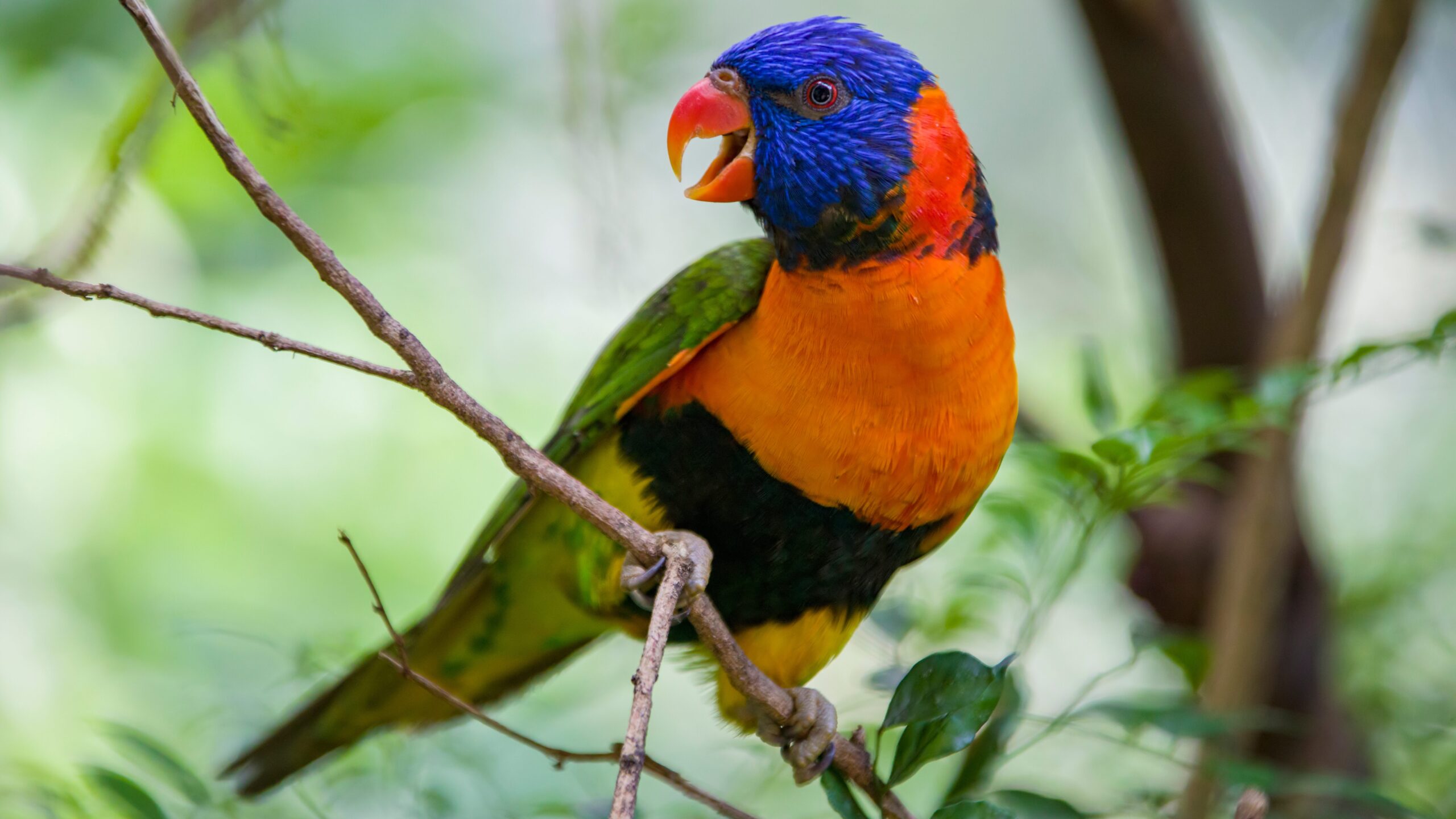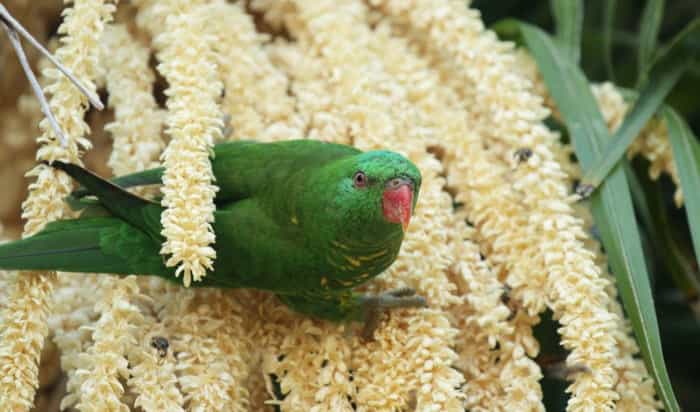Lorikeets: Four things you didn’t know about them

Loud and belligerent, rainbow lorikeets are the soundtrack of urban Australia. They live so close to us that we think we know everything there is to know about the iconic bird.
Here are a few facts you about rainbow lorikeets you may have missed.
In some parts of Australia, Lorikeets are considered pests

Okay, we know this is hard to believe, but even native species can be classed as pests if they extend their ranges. And this is the case for the rainbow lorikeet.
Rainbow lorikeets were introduced to Western Australia in the 1960s… by accident.
According to the Department of Primary Industries and Regional Development, the lorikeet population in Perth was established from fewer than 10 escaped or released caged birds.
The damage wrought by the birds is extensive. They’ve had a big impact on agriculture as they feast on cherry, apple, pear, stone fruit, grape and vegetable crops.
They’re also fierce protectors of these resources, and their breeding sites, which drives out other native species native to Perth.
Lorikeets get heavily inebriated during the wet season in Darwin

Drunken birds? Yes, we’re serious. When the wet season approaches in Darwin and the mercury starts to climb, lorikeets get on the drink.
Red-collared lorikeets, native to the northern parts of Australia, exhibit tell-tale signs of drunkenness, such as difficulty flying, running into things and becoming friendlier towards humans. Basically, they lose their inhibitions.
What exactly causes these drunken behaviours is unknown, but it’s believed it could be due to the effect of a virus combined with ingesting alcohol from fermenting fruit.
The effects usually last for a couple of days, far longer than you would expect if it was just alcohol-related. Additional symptoms which suggest that the condition is more than simply drunkenness include respiratory problems and a discharge from bird’s nostrils, mouth and eyes.
In the past the phenomenon has been treated as a joke, but now, wildlife carers are becoming increasingly concerned for the birds during this time.
Lorikeets eat meat
The diet of a lorikeet typically mirrors its fruity colours: think bright flowers such as grevilleas, banksias and eucalyptus. But on some occasions they’ve been spotted eating mince and other meat products left out by bird feeders for local kookaburras and magpies.
It’s a disturbing sight to see, and bird experts say it’s not a good thing for specialist nectar and pollen feeders to be gorging on minced meat.
The odd behaviour first came to attention when the ABC published images of two lorikeets feeding on meat. Experts initially dismissed the birds as strange outliers.
Following the report however, bird expert Darryl Jones received over 500 emails about lorikeets and other parrots feasting on meat.
There’s a lot of speculation about this behaviour. These include everything from a lack of food for an overly abundant bird to bird feeders putting more meat on the menu.
Recently, some have suggested that the competitive and defensive eating behaviours of lorikeets (such as those causing major issues for native birds in Western Australia) are the reason behind the meat-eating.
Further research will hopefully unlock the mystery behind the behaviour.
There are actually 8 species of lorikeet

You’re probably most familiar with the rainbow lorikeet, but there are actually seven other species of lorikeet, and all are equally as beautiful as their cousin.
There’s the coconut lorikeet that’s relatively similar looking to the rainbow lorikeet, but has black stripes on its belly.
We have the red-collared lorikeet, which, as it names suggests, is defined by the red ring of feathers around its neck.
And there’s the scaly-breasted lorikeet, which looks markedly different from other lorikeets as it’s covered in green feathers with little streaks of yellow.
The purple-crowned lorikeet features the namesake pale purple-coloured crown, yellow-spotted cheeks and greeny-blue breast.
The smallest of all the lorikeets, the little lorikeet is bright green with a red face mask that encircles their beak.
The final two are the varied lorikeet, which is mostly green but has a cocktail of colour on its head, and the musk lorikeet, which kind of looks like it’s wearing red superhero mask across its eyes.





